Wildflower Seeds and Mycorrhiza
In fact I think nobody really knows an awful lot about an awful lot of important things.
But then, what do I know.
Well, I do think I know one thing.
Nature has been around much, much longer than we have - so perhaps it may be a good idea to take a look at what she has been doing all of this time.
You know all that time before we came along and 'helped'.
How about looking at wild flowers for example, well these are in decline too.
Do you think that all these other "declines" are just a coincidence ?
Well maybe, but just I don't think so.
For all of those countless years wild flowers nurtured the insects and produced the seeds which fed the birds, and gave the pollen to the butterflies and bees ( seen a very disappointed bee on a hybrid lately ) and generally looked beautiful while life got on around them.
Or was it that life got on because of them ?
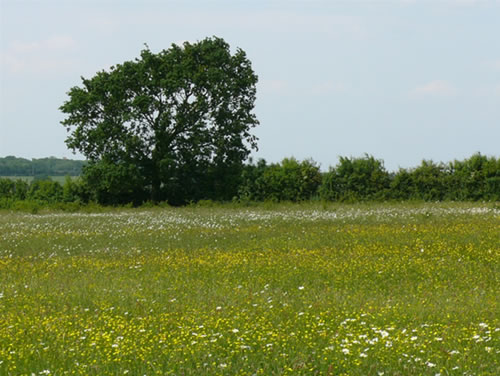
How many wild flower meadows will your Grandchildren see ?
A lot fewer than your Grandparents did !
Well, O.K. I know it's not likely that you have a meadow to plant, we certainly don't.
But how many little plots in our gardens can be put together, make the biggest meadow in the world ?
Can you imagine what that would do for the wild life in this country, a mini wild flower meadow everywhere a bee hovers, or a wild bird feeds ?
(Some people really can, take a look at Kathryn's ideas on www.riverofflowers.org )
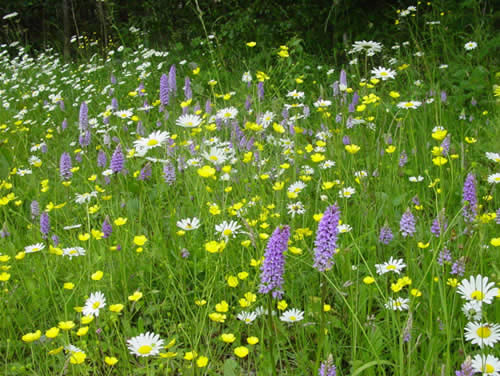
Can't you see a little glade in your garden, just humming with life ?
It's so easy too, Nature's the gardener !
We've been banging on for years about the importance of wild flowers.
A bit of a bank, perhaps a boggy bit, or around where the shed is - almost anywhere could be ideal.
Nature's flowers aren't as fussy as all them, near sterile, hybrids !
( If you want to learn more about wild flowers and their favourite places take a look at Jenny Steel's books.)
How about a simple easy way to create a wild flower garden ?
A wild flower garden which will be helped through all those droughts we are warned about by another of Nature's age old organisms - Mycorrhiza.
We have a of sachet seeds of all sorts of wild flowers, just perfect for a 'garden' meadow.
( They have the Royal Horticultural Society's 'Perfect for Pollinators' endorsement too.)
O.K. I hear you say,
"What wild flowers are these then ? ...... I have plenty of Rosebay Willow herb and the like ! "
- Well here they are, each packet has seeds for these wild flowers.
( Aren't I a show off with all the latin stuff !)
Achillea millefolium - Yarrow - 3.4 % in the mixture
Agrostemma githago - Corn cockle - 16.7 %
Centaurea cyanus - Cornflower - 1.7 %
Centaurea nigra - Common knapweed - 8.3 %
Digitalis purpurea - Foxglove - 1.7 %
Echium vulgare - Viper's bugloss - 0.8 %
Galium verum - Lady's bedstraw - 5 %
Glebonis segetum - Corn marigold - 1.7 %
Leucanthemum vulgare - Oxeye daisy - 8.3 %
Myosotis arvensis - Field Forgot-me-not - 0.8 %
Papaver rhoeas - Common poppy - 5 %
Prunella vulgaris - Selfheal - 3.3 %
Ranunculus acris - Meadow buttercup - 8.3 %
Silene dioica - Red campion - 8.3 %
Silene latifolia - White campion - 8.3 %
Singuisorba minor - Salad burnet - 16.7 %
Verbascum thapsus - Great mullein - 1.7 %
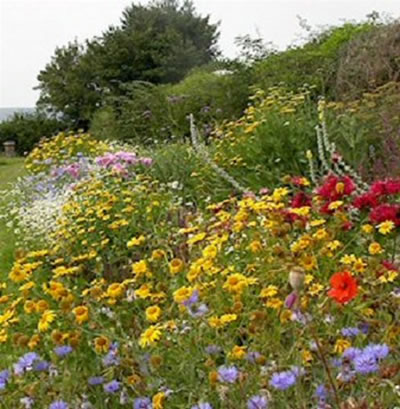
This is Jenny Steel's 'Nectar' Border
Somebody said once, in fact I think it was Einstein,
"When the Bees go - we go"
Let's help them stay around !
Let's plant the country with 'Garden Meadows'.
Just a 'meadow' of the 3 square yards that these packets of Mycorrhiza 'boosted' wild flower seeds will give you.
Then let Nature do what it has always done without us interfering, just keeping that old, essential 'Natural Cycle' going around, around, and then around again.
Like the Birds and the Bees will be in your 'Mini Meadow'.
(No, that's not rude, honestly, some people .... !)
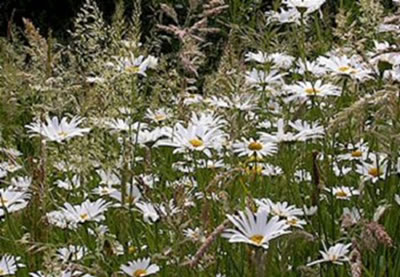
It's so easy with Nature's help, clear about three square yards of soil ( rough stuff will do) sow the seeds, water and wait.
( You can cut back if you like after all the seed heads have gone.)
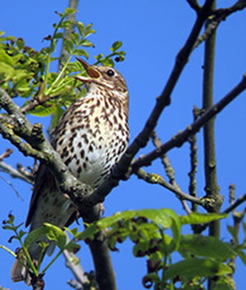
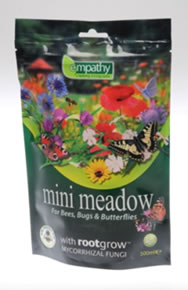
Wildflower Seeds and Mycorrhiza
500 ML Enough for a3 Sq. Metre 'Meadow' just £5.99
For some peculiar reason sometimes PayPal ask you to 'Open an Account' if you want to pay by card, just click on this button and the card payment page will appear !
